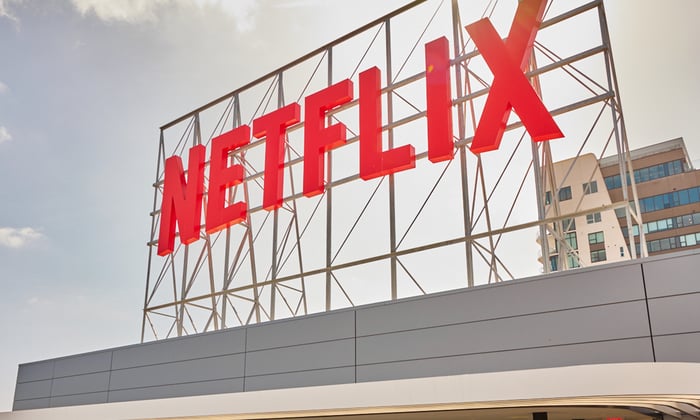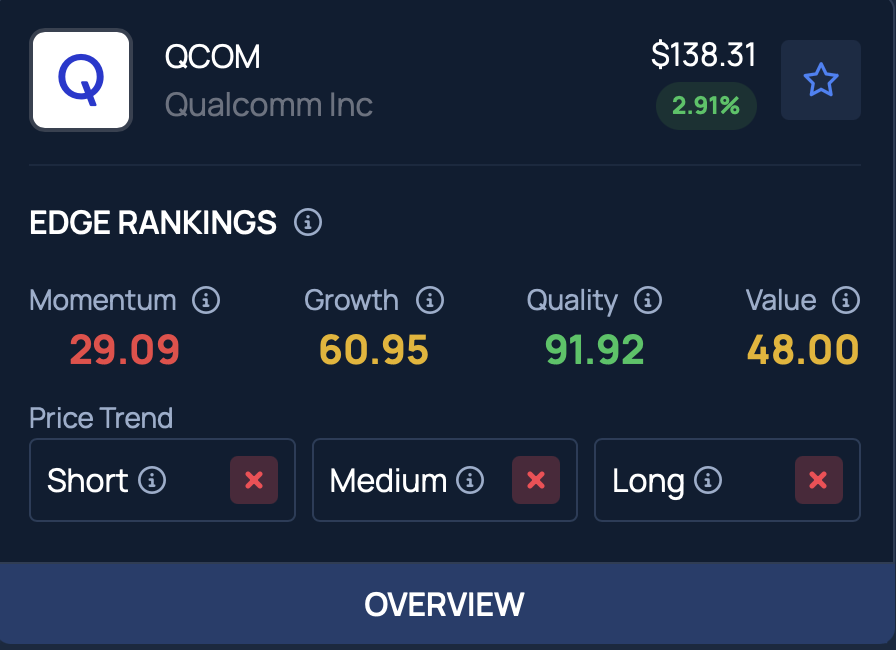Trump’s Tariffs Could Signal Opportunity for Netflix and Spotify Stocks
On April 2, President Trump announced significant tariffs on U.S. trading partners, likely raising the cost of imported goods. His objective is to stimulate domestic manufacturing and job creation. However, analysts predict short-term economic challenges, especially as affected nations may retaliate with their own tariffs.
Streaming Giants as Resilient Investments
Netflix (NASDAQ: NFLX) and Spotify (NYSE: SPOT) are two major players in the global streaming market. They may represent strong investment options amidst the looming trade tensions for several reasons:
- Digital goods currently remain unaffected by tariffs (although this may change).
- Both companies boast highly diversified revenue streams across more than 180 countries.
- Their subscription models involve relatively low monthly fees, which are unlikely to spur widespread cancellations even with potential price increases.
Amid market volatility, both Netflix Stock and Spotify Stock are down 13% from their peak. Nevertheless, they outperform the Nasdaq-100, which has seen a nearly 17% decline. As trade tensions are likely to persist, investors with an extra $1,500 may find value in acquiring one share of Netflix and one share of Spotify.

Image source: Netflix.
The Case for Netflix
Netflix holds the position of the world’s largest streaming service, boasting 301.6 million subscribers at the close of 2024. This surpasses its closest competitors: Amazon Prime with about 200 million subscribers and Disney+’s 124.6 million subscribers.
Offering three subscription plans—Standard with ads ($7.99/month), Standard without ads ($17.99/month), and Premium ($24.99/month)—the introduction of the ad-supported tier in November 2022 has been particularly successful. In Q4 2024, it represented 55% of all new signups in applicable markets, with nearly a 30% increase in subscribers using this plan compared to the previous quarter.
Over time, ad-tier subscribers grow in value for Netflix. As the subscriber base expands, the company can secure more advertising slots. Moreover, increased engagement translates into higher ad exposure, boosting revenue. Netflix reported that its advertising revenue doubled in 2024, with expectations for it to replicate that growth in 2025.
To maintain engagement, Netflix plans to invest significantly in live content. Notably, last year, it exclusively streamed NFL games on Christmas Day. Each game typically lasts over three hours, drawing subscribers for longer periods, especially compared to the average viewing time of two hours daily.
Netflix achieved a record $39 billion in total revenue for 2024, resulting in a net income of $8.7 billion—a 61% increase from 2023. Despite high spending to develop and license content, Netflix remains one of the few profitable streaming platforms, which speaks to its operational scale. For 2025, management plans to allocate $18 billion for expanding its content offerings, potentially widening its competitive edge.
Currently, Netflix Stock trades at a price-to-earnings (P/E) ratio of 46.2, higher than the Nasdaq-100’s P/E ratio of 29.2. However, this falls below its five-year average P/E ratio of 50.2, indicating investors have usually paid a premium for its growth and market dominance.
Furthermore, Wall Street analysts project Netflix’s earnings per share (EPS) to grow to $30.18 by 2026. This implies a forward P/E ratio of 30.2, suggesting the stock would need to rise by 66% over two years just to align with its historical average. Such growth could be plausible if Netflix becomes a safe haven amid tariff concerns.

NFLX PE Ratio data by YCharts.
The Case for Spotify
Spotify, recognized as the largest music streaming service globally, reported 425 million free users monetized through ads and 263 million Premium subscribers at the end of 2024. The latter group contributes 87% of Spotify’s total revenue, prompting the company to invest heavily in converting free users into paying subscribers.
In its efforts to enhance user engagement, Spotify introduced an AI-powered feature called AI Playlist for Premium subscribers, allowing personalized song suggestions based on user prompts. This innovative approach not only improves user experience but encourages exploration of new music.
Moreover, Spotify is broadening its content beyond music. Already a leading platform for podcasts, it entered the audiobook market in 2022, allowing Premium subscribers access to 15 hours of content each month, while free users cannot access audiobooks at all. This move illustrates Spotify’s commitment to expanding its offering and enhancing user retention.
Spotify’s Impressive Growth: Revenue Surges and Profits Arise
In a significant milestone, Spotify reported a revenue of $17.3 billion in 2024, reflecting an 18% year-over-year growth. This increase marked a notable acceleration from the 13% growth experienced in 2023. Strong expense management contributed to Spotify’s achievement of $1.2 billion in net income, making 2024 the first profitable year in the company’s history. This outcome represents a substantial turnaround from the $587 million net loss recorded in 2023.
As Spotify begins to embrace profitability, traditional valuation methods like the price-to-earnings (P/E) ratio become less applicable. Instead, the price-to-sales (P/S) ratio, which compares the market capitalization to annual revenue, serves as a more relevant measure. Currently, Spotify’s P/S ratio is at 6.8, approaching historical highs since going public. However, this high ratio does not automatically imply that it is an unfavorable investment at this time.

SPOT PS Ratio data by YCharts.
Looking ahead, Spotify CEO Daniel Ek previously forecasted that the company could generate $100 billion in revenue by 2032, alongside a user base exceeding 1 billion by 2030. Should these projections materialize, investors who hold Spotify stock over the next five to seven years may find themselves in a favorable position by acquiring shares at this juncture. In light of potential global trade challenges in the coming years, owning this stock could present an appealing opportunity.
Is Now the Right Time to Invest $1,000 in Netflix?
Before purchasing stock in Netflix, potential investors should consider the following:
The Motley Fool Stock Advisor analyst team recently highlighted their selections for what they identify as the 10 best stocks for investors right now, notably excluding Netflix from this list. The chosen stocks stand to generate substantial returns over the upcoming years.
For example, if you had invested $1,000 in Nvidia back on April 15, 2005, when it made the list, you’d now have $578,035!*
Stock Advisor offers an accessible strategy for achieving investment success, featuring guidance on portfolio building, regular analyst updates, and two new Stock picks every month. This service has outperformed the S&P 500 by more than four times since 2002. Explore the latest top 10 stock recommendations when you join Stock Advisor.
See the 10 stocks »
*Stock Advisor returns as of April 5, 2025.
John Mackey, former CEO of Whole Foods Market, an Amazon subsidiary, serves on The Motley Fool’s board of directors. Anthony Di Pizio holds no positions in any of the stocks mentioned. The Motley Fool recommends Amazon, Netflix, Spotify Technology, and Walt Disney. There is a disclosure policy in place.
The views and opinions in this article represent those of the author and do not necessarily reflect those of Nasdaq, Inc.


